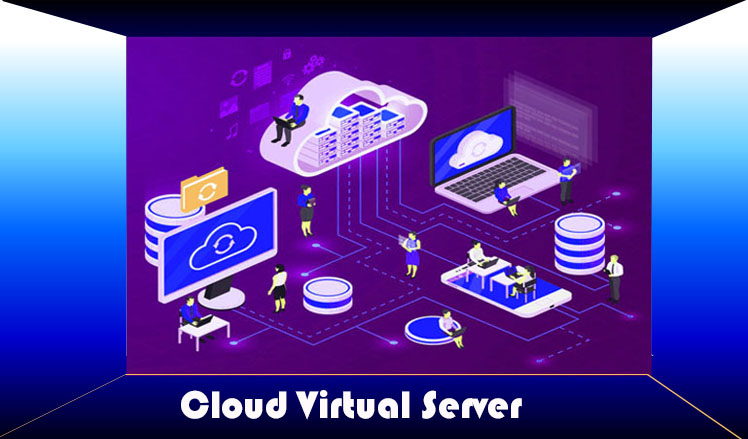Cloud Virtual Server: Unlocking the Power of Modern Hosting
Businesses and individuals turn to cloud virtual servers to meet their hosting needs in the rapidly evolving digital landscape. These servers offer unmatched flexibility, scalability, and cost-effectiveness compared to traditional on-premise or dedicated servers.
Understanding the intricacies of cloud virtual servers and how they can benefit your business is crucial in today’s tech-driven world. This article delves into what cloud virtual servers are, their advantages, and how to choose the right solution for your needs.

What is a Cloud Virtual Server?
A virtual virtual server, often called a Virtual Machine (VM), is a virtualized server hosted in a cloud computing environment. Unlike physical servers, cloud virtual servers do not rely on dedicated hardware. Instead, they run on a hypervisor, which allows multiple virtual servers to operate on a single physical server. This virtualization technology enables the efficient use of resources and provides greater flexibility.
Cloud virtual servers can be quickly provisioned, configured, and scaled to meet changing demands, making them ideal for various applications, from hosting websites to running complex enterprise applications.
Key Benefits of Cloud Virtual Servers
- Scalability and Flexibility:
- Dynamic Scaling: Easily scale resources up or down based on demand. This elasticity ensures optimal performance during peak times and cost savings during off-peak times.
- Wide Range of Configurations: Choose from various configurations to match specific requirements, whether you need high CPU performance, large amounts of memory, or extensive storage capacity.
- Cost-Effectiveness:
- Pay-as-You-Go: Only pay for the resources you use, with no upfront investment in hardware. This model reduces financial risk and improves cash flow management.
- Cost Optimization: Use cost management tools provided by cloud service providers to monitor and optimize spending.
- Reliability and Redundancy:
- High Availability: Cloud infrastructure typically includes redundant systems to ensure high availability and minimize downtime.
- Disaster Recovery: Built-in disaster recovery options allow for quick recovery of data and applications in case of a failure.
- Global Reach:
- Multiple Data Centers: Leverage the extensive network of data centers offered by major cloud providers to deploy applications closer to users around the world.
- Low Latency: Improve performance and user experience with reduced latency by hosting applications in geographically diverse locations.
- Security and Compliance:
- Advanced Security Measures: Benefit from advanced security features like encryption, DDoS protection, and regular security updates.
- Compliance: Ensure compliance with industry standards and regulations, as many cloud providers offer services that meet regulatory requirements for data protection and privacy.
Leading Cloud Virtual Server Providers
Several leading providers dominate the cloud virtual server market, offering unique features and benefits. Here’s a look at three major players:
Amazon Web Services (AWS): AWS is a pioneer in cloud computing, offering a broad range of services, including Amazon Elastic Compute Cloud (EC2). EC2 provides resizable compute capacity in the cloud and supports various instance types optimized for use cases, from general-purpose to memory-optimized instances.
Microsoft Azure: Azure Virtual Machines (VMs) are highly versatile and support various operating systems, including Windows and Linux. Azure offers integration with other Microsoft services, making it a strong choice for businesses already using Microsoft products.
Google Cloud Platform (GCP): Google Compute Engine (GCE) provides scalable and flexible virtual machines running in Google’s data centers. GCP is known for its robust machine learning and data analytics capabilities, making it ideal for data-intensive applications.
How to Choose the Right Cloud Virtual Server
- Assess Your Needs:
- Workload Requirements: Determine the computing power, memory, storage, and bandwidth your applications require. Understanding your workload helps you select the right instance type and configuration.
- Scalability Needs: Consider how your resource requirements may change over time. Choose a provider that offers easy scalability options.
- Evaluate Provider Features:
- Performance: Look at the performance benchmarks of different providers to ensure they meet your performance needs.
- Service Level Agreements (SLAs): Check the uptime guarantees and support options. A robust SLA is crucial for mission-critical applications.
- Consider Costs:
- Pricing Models: Compare the pricing models of different providers. Look for options like reserved or spot instances that offer long-term or flexible usage cost savings.
- Total Cost of Ownership (TCO): Calculate the total cost over the expected usage period, including potential costs for additional services like data transfer or storage.
- Security and Compliance:
- Security Features: Ensure the provider offers robust security measures that align with your requirements.
- Compliance Standards: Verify that the provider complies with relevant industry standards and regulations.
- Support and Customer Service:
- Technical Support: Evaluate the level of technical support provided, including availability, response times, and expertise.
- Community and Resources: Access to a strong community and extensive documentation can be invaluable for troubleshooting and optimizing your cloud environment.
Future Trends in Cloud Virtual Servers
- Edge Computing:
- Decentralized Computing: As the need for low-latency processing grows, edge computing will complement cloud virtual servers by bringing computation closer to the data source.
- Artificial Intelligence and Machine Learning:
- AI-Driven Optimization: Cloud providers increasingly integrate AI and machine learning to optimize resource allocation, predict failures, and enhance security.
- Hybrid and Multi-Cloud Strategies:
- Flexibility and Redundancy: Businesses are adopting hybrid and multi-cloud strategies to leverage the strengths of multiple providers and ensure redundancy.
- Sustainability:
- Green Computing: Providers focus on sustainability, using renewable energy sources, and optimizing data center efficiency to reduce their carbon footprint.
Conclusion
Cloud virtual servers represent a transformative shift in how businesses approach their hosting and computing needs. With unparalleled flexibility, scalability, and cost-effectiveness, they are a compelling choice for a wide range of applications. By understanding the key benefits and considerations when choosing a provider, businesses can harness the full potential of cloud virtual servers to drive growth and innovation. As technology evolves, staying informed about the latest trends and advancements in cloud computing will ensure your business remains competitive and agile in the digital age.